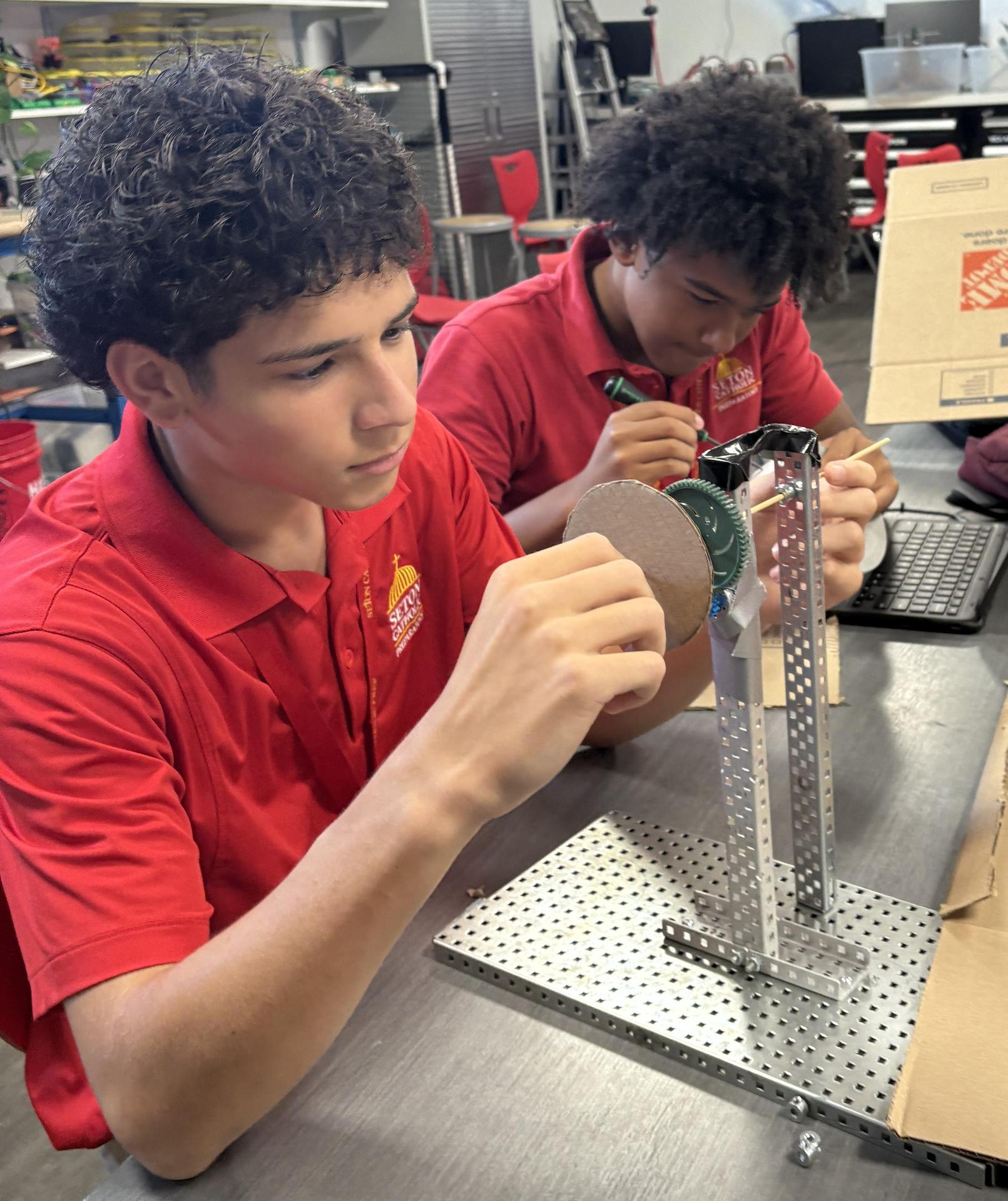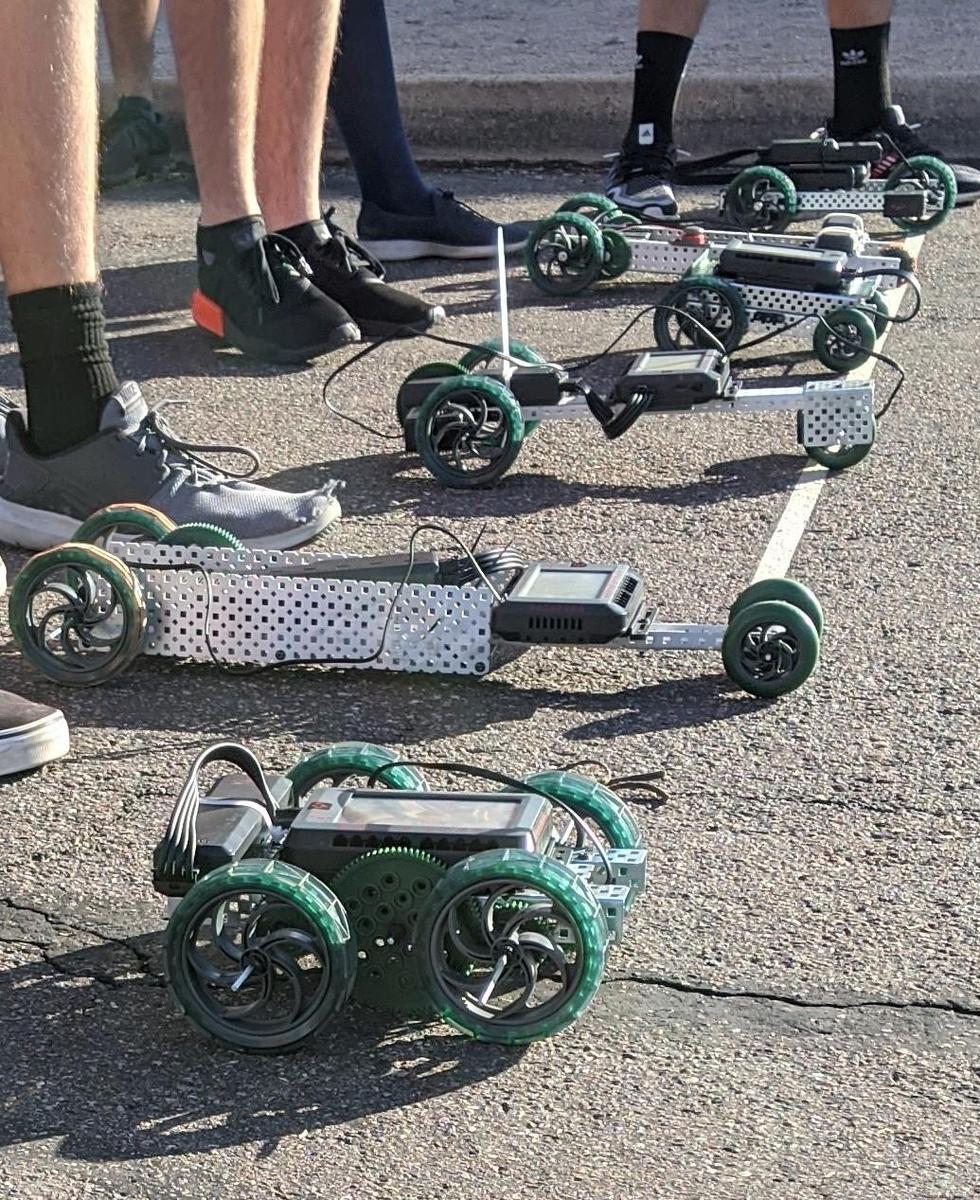Pathway to Innovation: Science and Engineering Program
We offer a unique four-year Science and Engineering program called Pathways to Innovation (PTI) specifically for students who love building, designing, and solving real-world problems. Students learn to think like engineers from day one.

What makes this program unique?
- 4-year engineering track starting freshman year
- Project-based learning in every course
- Integration of biology, physics, math, and engineering concepts
- Opportunities for robotics, coding, and product design
- Capstone project senior year-design, prototype, test, and present
- Builds readiness for engineering majors and STEM careers
- Taught by experienced faculty with real-world STEM experience
Who is the program for?
Incoming freshman and invited to the program based on:
- High School Placement Test performance and/or
- Faculty review and PTI application
Students not invited initially may reach out to Mr. Foor at [email protected]
PTI Graduation Requirements
- Engineering (4 credits)
- English (4 credits)
- Fine Arts (1 credit)
- Health and Physical Education (1 credit)
- Lab Science (4 credits)
- Mathematics (4 credits)
- Social Studies (3 credits)
- Theology (4 credits)
- World Language (2 credits)


At a Glance: What Student Learn